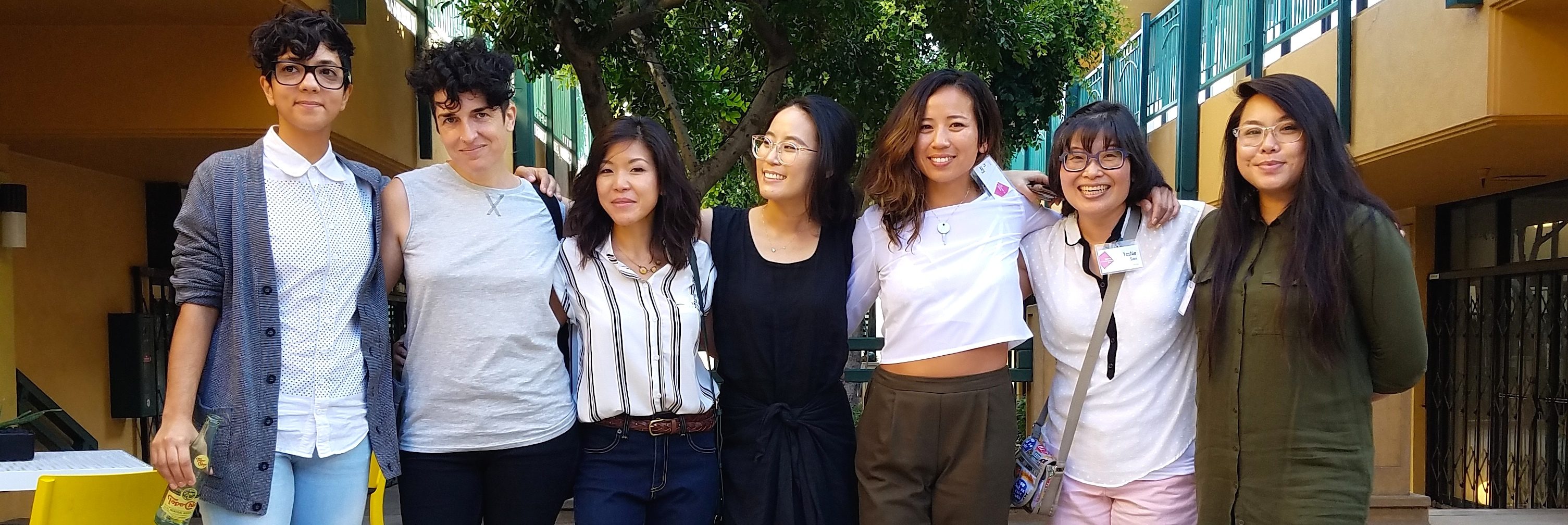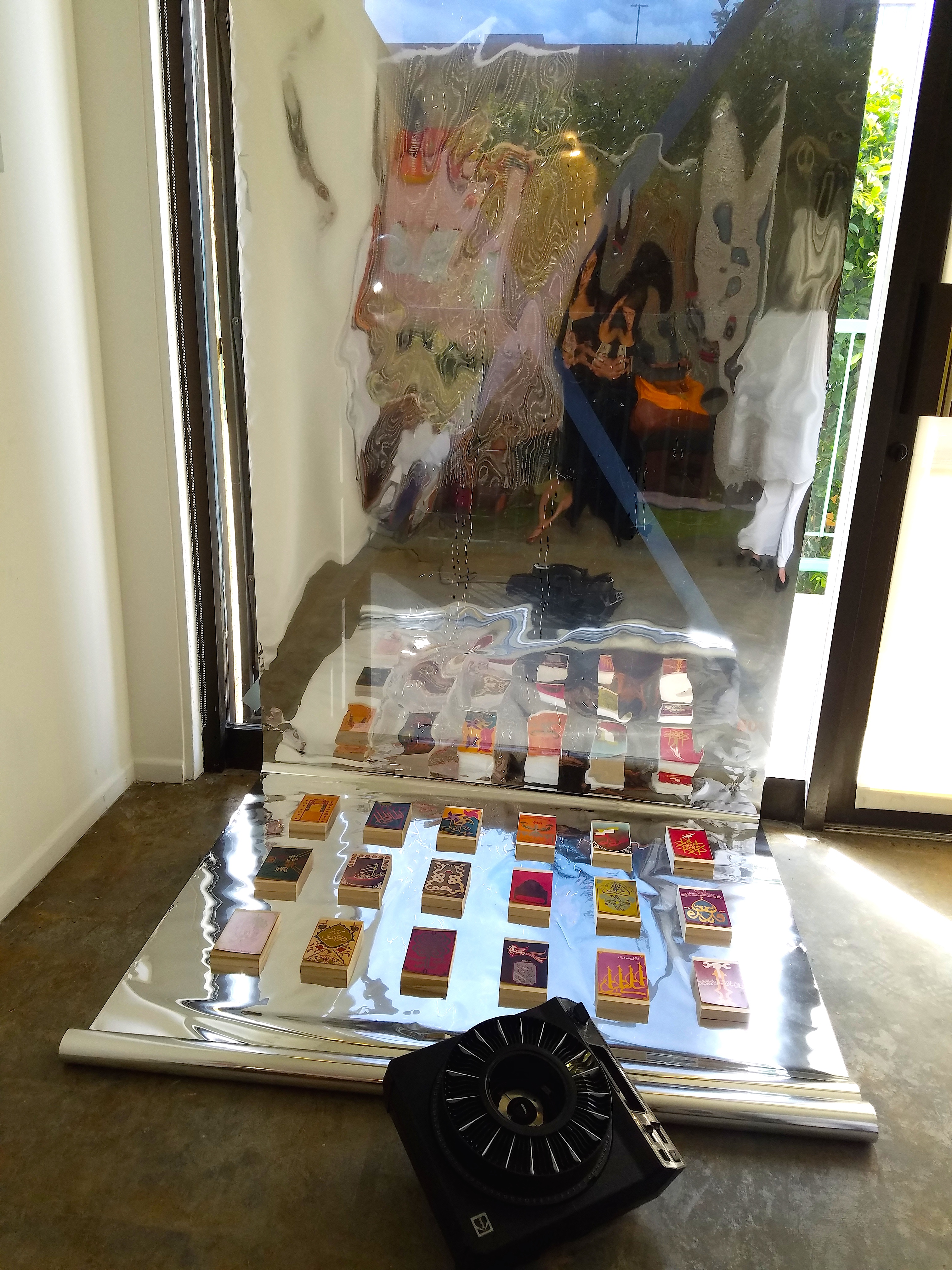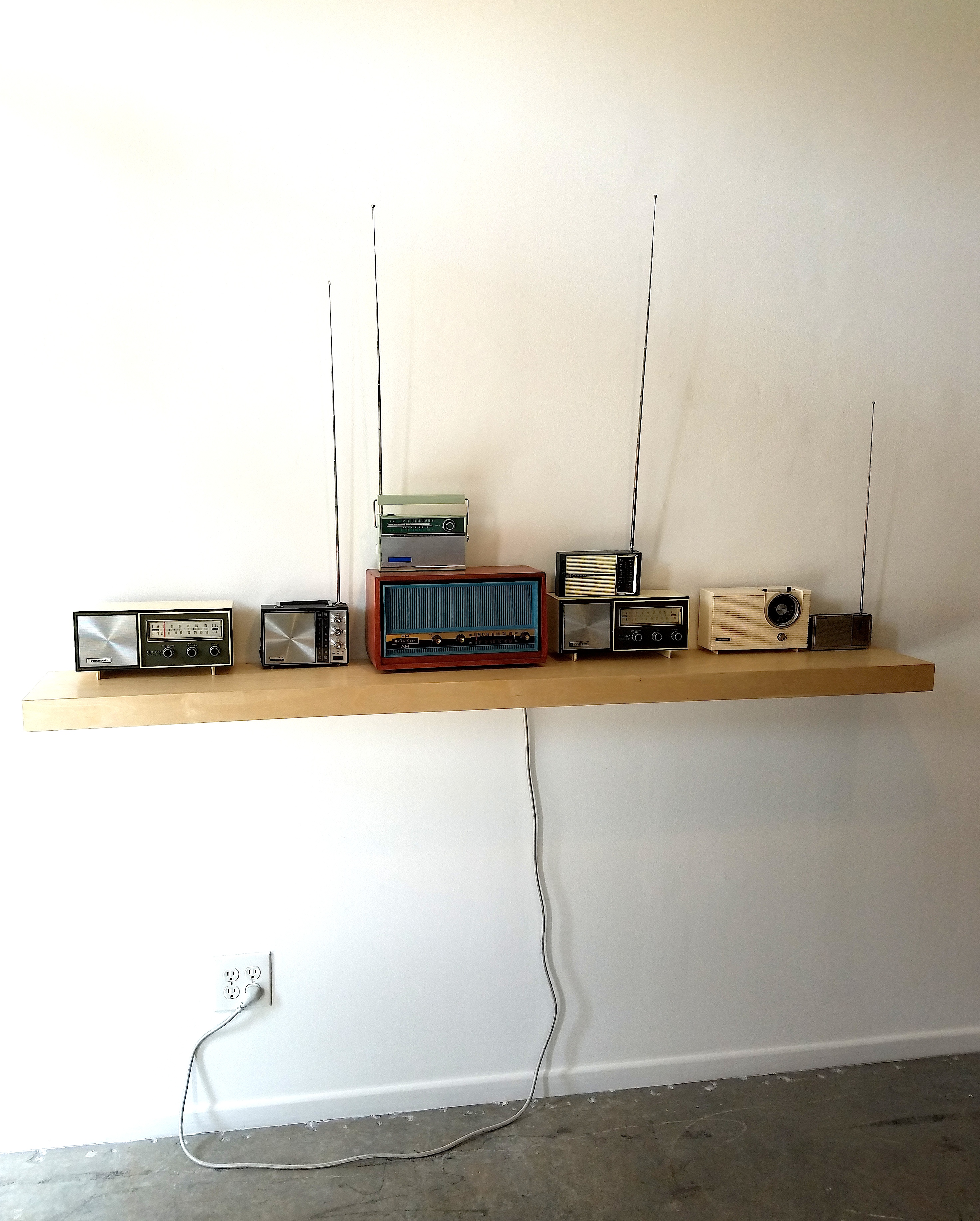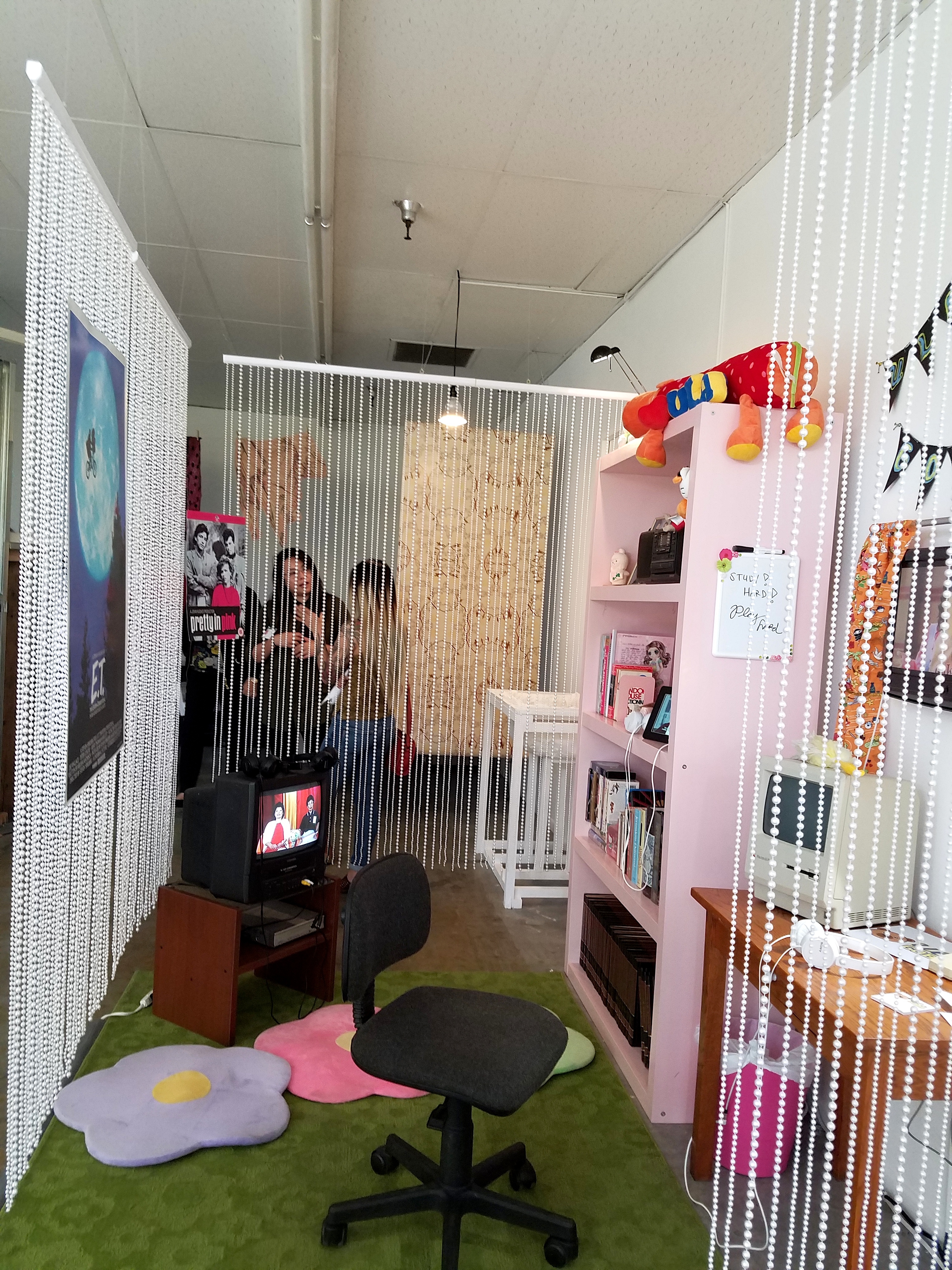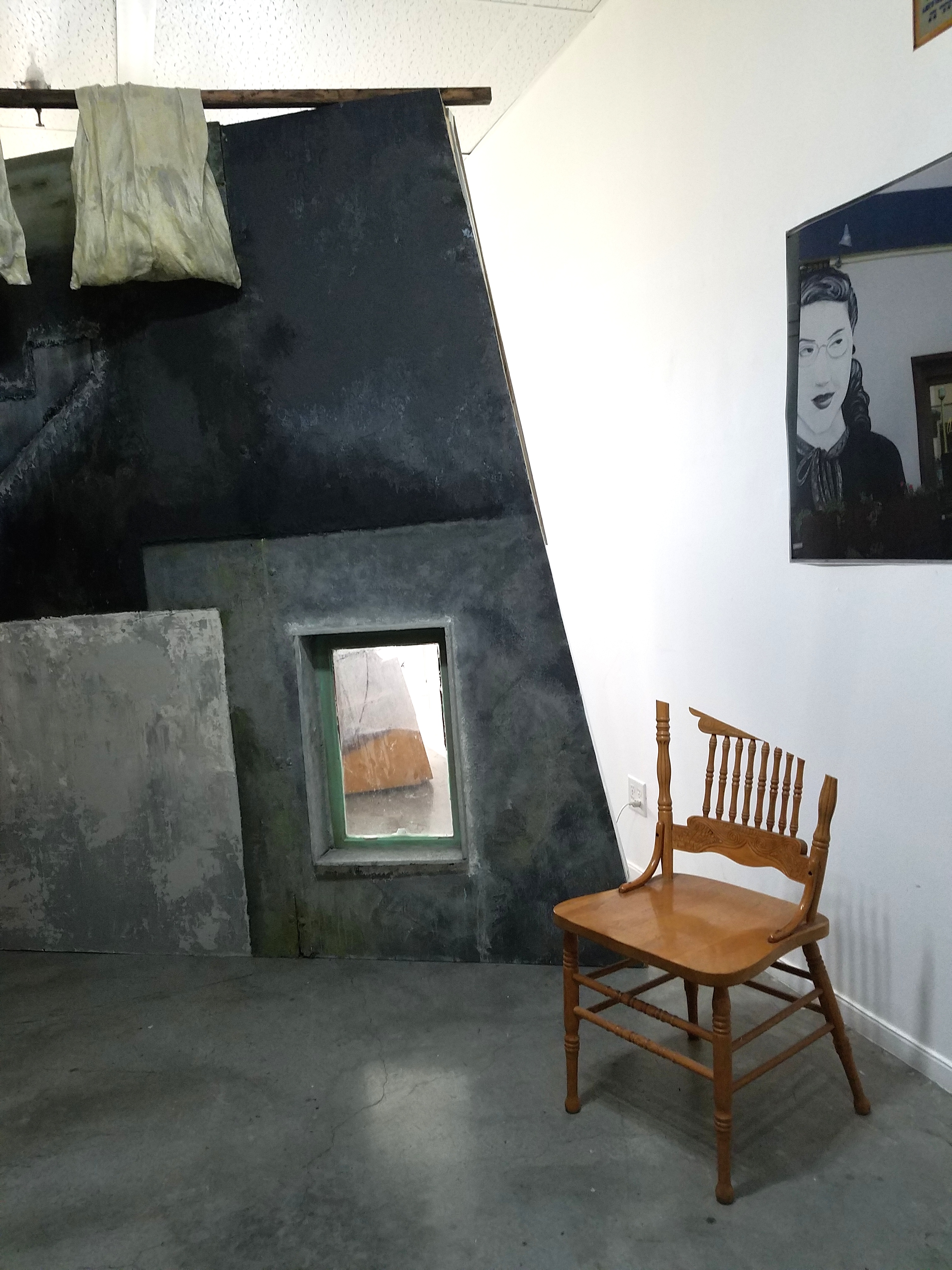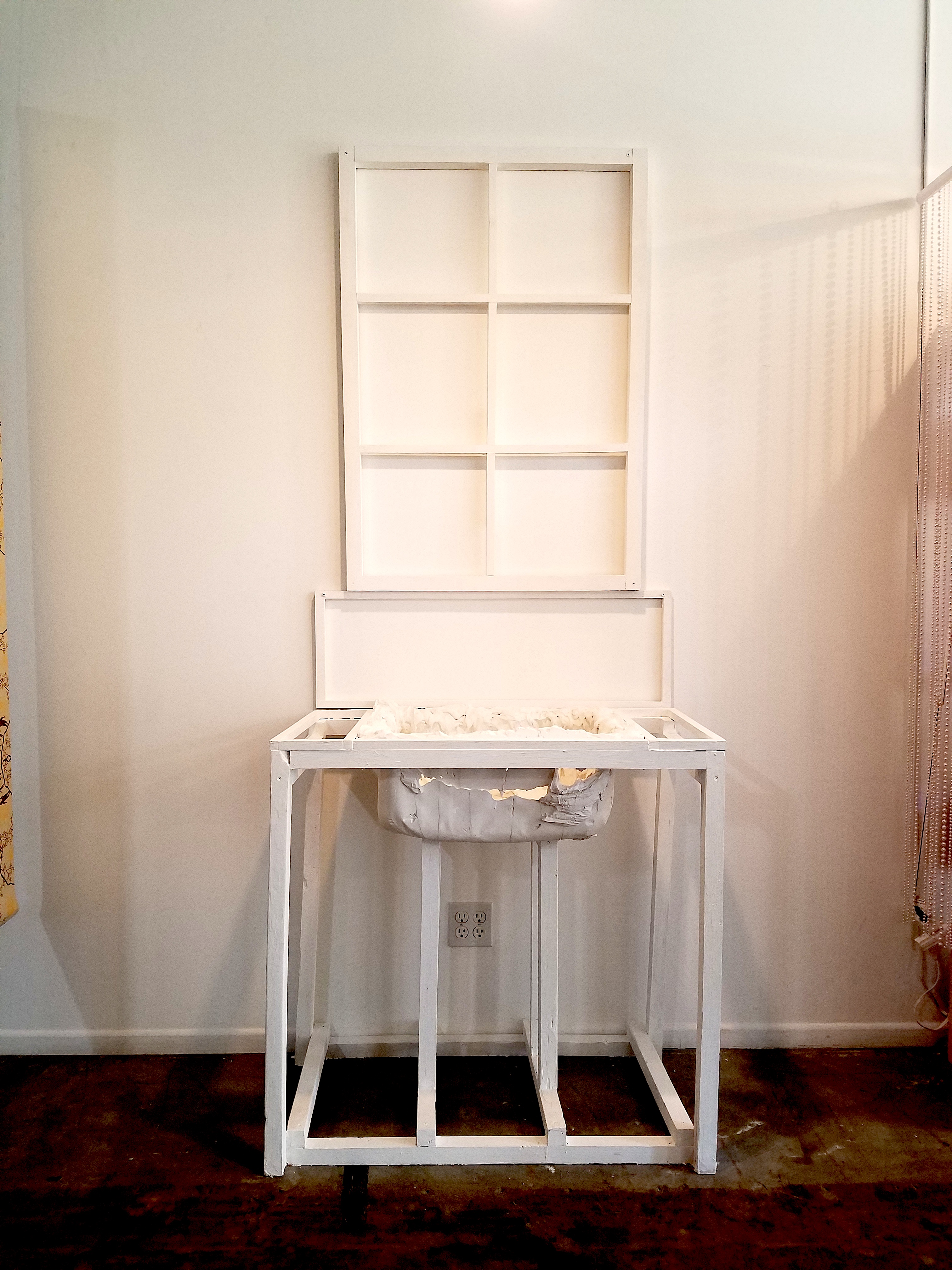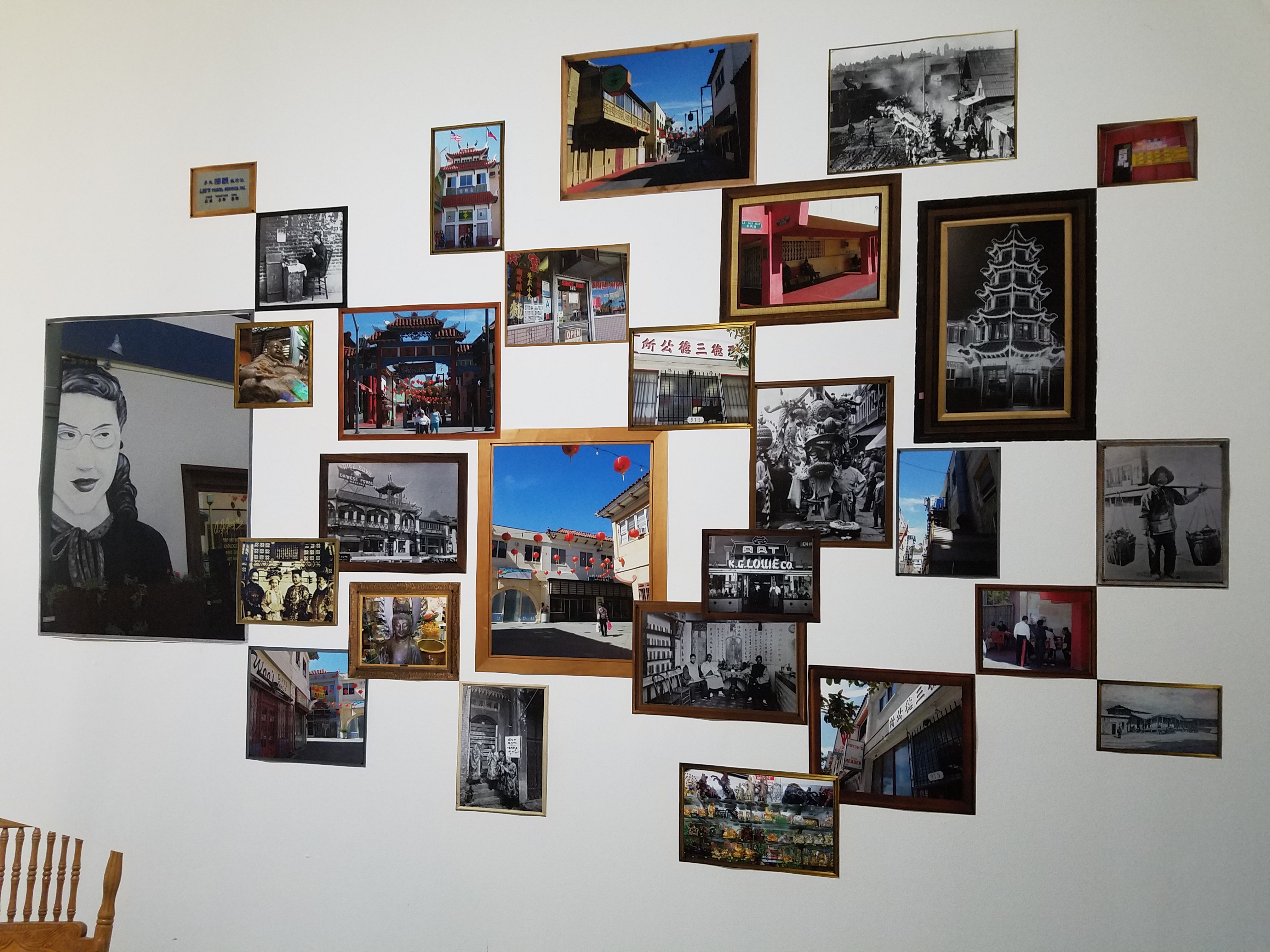Featured Event: ‘Aliens with Extraordinary Abilities’ | Los Angeles, California
An exhibition curated by Camella DaEun Kim featuring 8 young artists: Jenny Donaire, Ting Ying Han, Gelare Khoshgozaran, Ann Le, Yoshie Sakai, Kyungmi Shin, Jimena Sarno, and Kim Ye at the Fellows of Contemporary Art, Los Angeles, May 20 - July, 2017.
 This past month I had the pleasure to go to Chinatown, Los Angeles to see an exhibition called ‘Aliens with Extraordinary Abilities’ at ‘Fellows of Contemporary Art (FOCA)’ Gallery. The curator, Camella DaEun Kim, put it together displaying the works of 8 artists who identify themselves as either immigrants or first generation Americans.
This past month I had the pleasure to go to Chinatown, Los Angeles to see an exhibition called ‘Aliens with Extraordinary Abilities’ at ‘Fellows of Contemporary Art (FOCA)’ Gallery. The curator, Camella DaEun Kim, put it together displaying the works of 8 artists who identify themselves as either immigrants or first generation Americans.
The exhibition’s title comes from the description of the type of VISA that foreign artists must obtain to be able to work and live in the U.S. as artists. Camella cleverly used the phrase to ridicule this VISA detail, showing that measuring someone’s right to mobility based on their 'extraordinary abilities’ end up being quite arbitrary. Nevertheless, both she and the other artists in the show were somehow empowered by the phrase.
The day of the panel discussion between artists and public, Camella opened the conversation by quoting the writer Julia Kristeva from ‘Strangers to Ourselves’:
“The foreigner lives within us; he is the hidden face of our identity, the space that wrecks our abode, the time in which understanding and affinity founder. The ‘foreigner’ then is something hidden in ourselves, something with the potential to destroy ‘home’ and something that is beyond ‘understanding’ our relations with each other.”
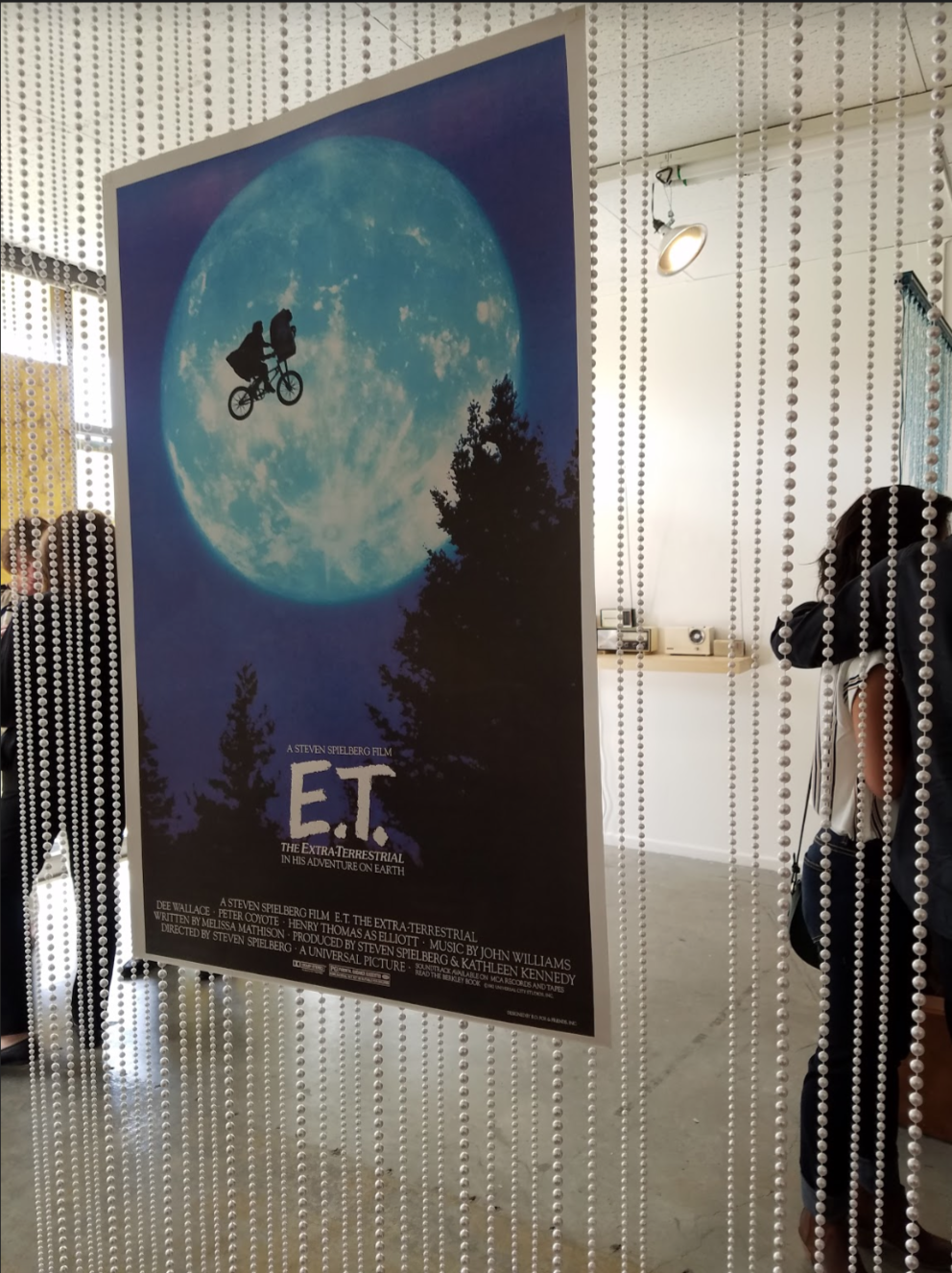 Camella underlined the collaborative aspect of this project, and explained how it created a true dialogue among the works, as well as the artists. This was an important aspect of the project, since her original idea was focused on how to negotiate with and support the other artists in order to make everything come together. Deeper than this alone, she mentioned having trouble with the tension between herself as an artist and herself as a curator for this exhibition. Working with other artists is a challenge, but it also teaches you to let go, to be open to collaboration in order to find the best way to make things work and make them flow.
Camella underlined the collaborative aspect of this project, and explained how it created a true dialogue among the works, as well as the artists. This was an important aspect of the project, since her original idea was focused on how to negotiate with and support the other artists in order to make everything come together. Deeper than this alone, she mentioned having trouble with the tension between herself as an artist and herself as a curator for this exhibition. Working with other artists is a challenge, but it also teaches you to let go, to be open to collaboration in order to find the best way to make things work and make them flow.
The whole creation of the show was like a ‘family effort’ in that the artists had to figure out how to put together in one coherent exhibition several different media, how to fill the space, how to complement each other’s work, and how to make it function as a whole to get their ideas across and to communicate them to the viewers. In coming together, they worked through all the details, remembering the homes they grew up in, and sharing that feeling with the viewers walking into the gallery.
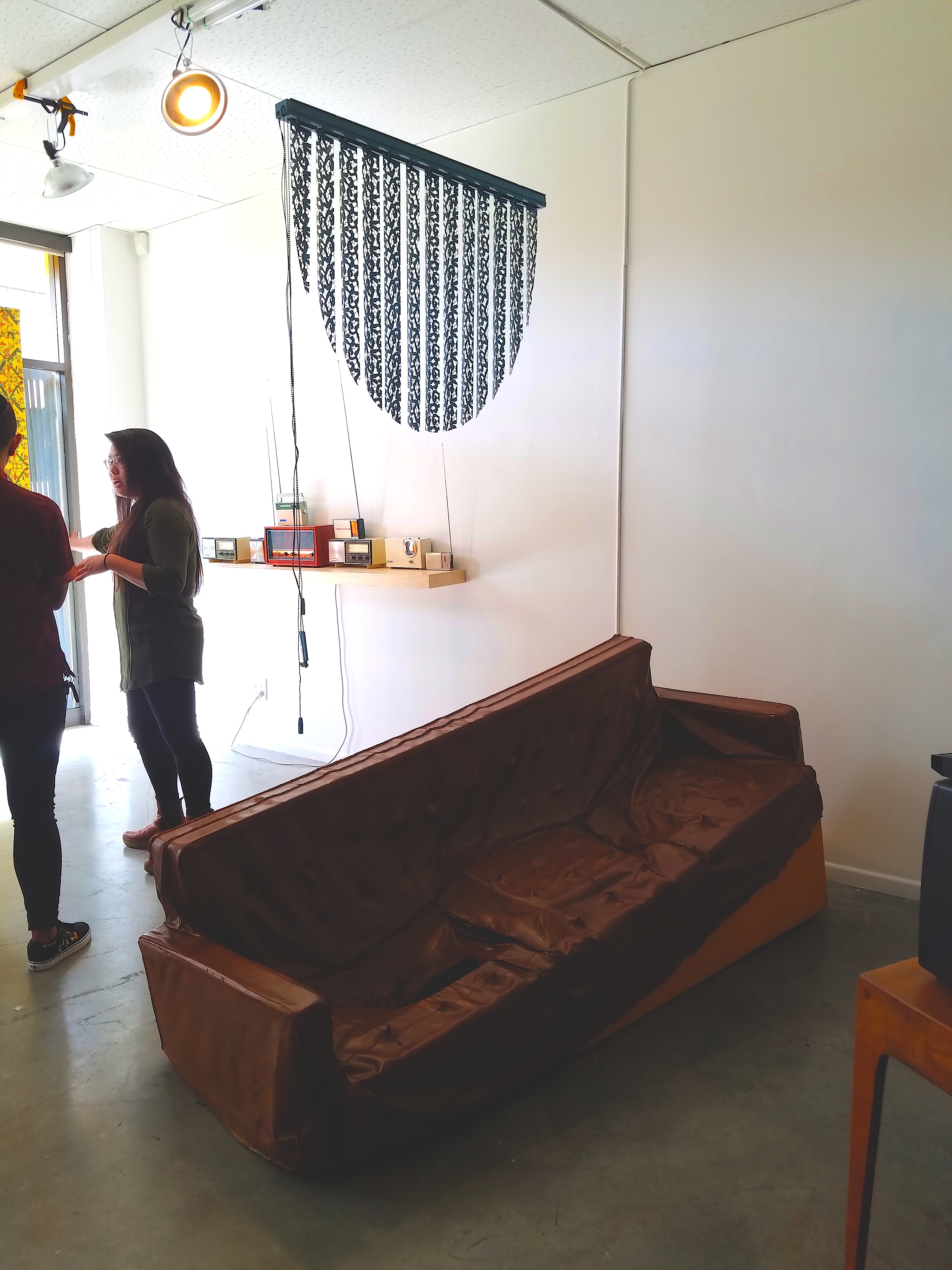 The collaboration between these women delivered great results. Upon walking into the exhibition space, you felt like you were walking into a home with different ‘rooms’. You saw two bedrooms, a living room, a sink, wallpapers, and everything in between that would set you in the space of a home. Every work was different, yet touching on similar undertones to complement each other, almost as if all the works had been created to be exhibited together, since each artist occupied one part of this ‘home’ that made up the exhibition. We later found out that half of the works had not been made until later in the installation process, which made it even more impressive as a collaboration.
The collaboration between these women delivered great results. Upon walking into the exhibition space, you felt like you were walking into a home with different ‘rooms’. You saw two bedrooms, a living room, a sink, wallpapers, and everything in between that would set you in the space of a home. Every work was different, yet touching on similar undertones to complement each other, almost as if all the works had been created to be exhibited together, since each artist occupied one part of this ‘home’ that made up the exhibition. We later found out that half of the works had not been made until later in the installation process, which made it even more impressive as a collaboration.
Regardless of these artists’ different experiences growing up as immigrants or first-generation Americans, their backgrounds are linked to one another through memory and history. These are the driving forces in their understanding of themselves and those they love, and their art reflected it. Each artwork emanated the idea of family, whether functional or dysfunctional, the way those family dynamics affect us, as well as make us react. With their memories, each artist took us out of our place and put us in their shoes. They offered their experiences to us, piecing together each memory into a present-day abode for all to see.
Gelare presented 20 artworks that made up her mother’s thesis from when she was a graphic design student at the University of Teheran, Iran. 35 years later Gelare attended the same university.
After the revolution of 1979, the university shut down, some teachers were expelled, others fled. When it reopened, it had a new specific agenda for artists. Gelare's mother first idea for her thesis was rejected, and she had to do what she was recommended: designing a poster for the 20 most important days of the calendar.
The images Gelare presented in the show are tiny reproductions of her mother’s thesis work, which she did in collaboration with a calligrapher. She showed 18 of the 20 original pieces as mementos, in an attempt to reflect back on her own artist education and background. She made them into sliding images, shown by a projector, bringing back to life her mother’s work in its original medium.
Jimena has been in the U.S. for 25 years. She recalled being here during the referendum on Proposition 187, which stated that an illegal immigrant could be deported after seeking medical care. One of her first experiences here was being rushed to the hospital with a high fever, awfully scared of what could happen to her for seeking treatment.
Seeing radios as playing a large role in culture, especially in her home country, Argentina, for this exhibition she created a piece composed of many old radios. She called it ‘International Agreement’, responding on one hand to the title of the exhibition, ‘Aliens with Extraordinary Abilities’, on the other to the violence which is more in the open again, especially among immigrants.
In Jimena’s view, being an immigrant is not a temporary condition, due to current location or place, because home is always in the past, so the radios in her installation are there not only to represent an early technology of the past, but to bring back the memory and nostalgia of her home country, connecting her to specific moments from her past.
The inspiration for Kim’s works comes from her journey to the U.S. from China when she was 5 years old. Her parents didn’t speak English, so from her early age she became their translator/ambassador in the new culture. Not knowing what was going on either, she would mimic what others did around her. Her work expresses the idea of embodying the stranger, of trying to fit in; this act of assimilation translates into attempting to perform something correctly, and also trying to reflect what is being shown to you or presented as the ‘normal’. The ‘normal’ became for her a charged space, since she would constantly question whether she was doing ‘it’ correctly, as for example in celebrating American holidays, even if not knowing or understanding the meaning of what the celebrations represented.
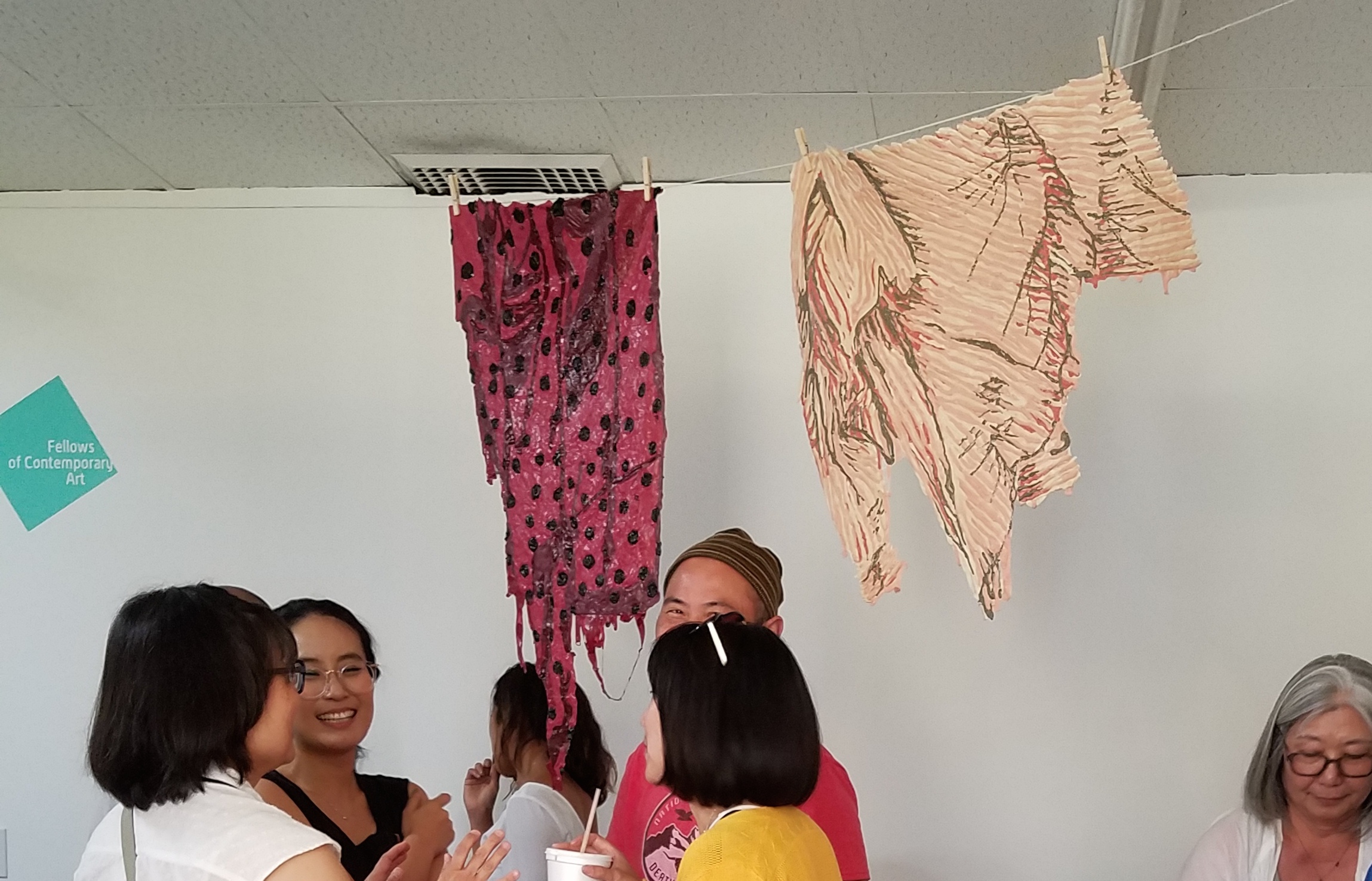 Other works come from her memories and old photographs of her and her parents, their excitement for making it into the U.S., learning about the new culture, and wanting to document it. She said it was like her parents documented the ‘commercialization of choice’, and their excitement of not knowing where their lives were going to when they came here… ‘well, now we know’’ she said with a big laugh echoed by the viewers at the panel.
Other works come from her memories and old photographs of her and her parents, their excitement for making it into the U.S., learning about the new culture, and wanting to document it. She said it was like her parents documented the ‘commercialization of choice’, and their excitement of not knowing where their lives were going to when they came here… ‘well, now we know’’ she said with a big laugh echoed by the viewers at the panel.
Yoshi’s installation for the exhibition is part of the work ‘Koko’s Love’, a series of autobiographical videos conceived like episodes of ‘soap operas’, used to talk about familial disfunctionalities and functionalities. The main character in the story is Yuki, a girl whose family owns a liquor store, just as Yoshi’s family did.
For the exhibition she created an installation of the girl’s room, where on different screens you could see videos from her soap operas, as well as ‘family portraits’. Yoshi played all the characters in both videos and portraits, also using voice-overs. She speaks of the struggles of growing up as an Asian-American in California, trying to be the ‘model minority’, while tackling the issue of being a woman, and of what is expected of a woman in her culture. Humor is a big component in Yoshi’s work, as an explicit defense mechanism from the tension and anxiety we experience in today’s society.
Ting Ying started her project in 2010, working on culture identity and placement. Her work is about personal relationships with the family of origin. She digs deep into these issues, and rather than keeping them too personal, she makes them easy for others to relate to, for people to understand how complex being an immigrant can be: old vs. new ideas, rooted vs. learned culture, adaptation, and the enforcement of them all as a daily challenge.
She mentioned having always been interested in architecture and structure, specifically in creating partial structures, in their relation to exposure, in how the interior becomes the exterior, how a part of the inside is also part of the outside and vice versa, and how they come together as one environment. There is always change; home and space are ever changing, as people are, and this is how she feels as an immigrant; always the need to change, to let go of some of the old and bring in the new, like you would in rearranging your home, putting older things down in order to put up new ones.
Her installation showed different abstract shapes and colors, visual reminders of that ‘change’, reminders that even if things do not look the same, you will always have the memories of them, they are still with you. Two pillows dipped in wax hang from her installation, calling the attention to the viewer. It is a visual symbol of familiarity, company, and the malleability and ever-changing aspect of home spaces, people, and life.
Ann Le is a first-generation Vietnamese-American. For this exhibition she created two wallpapers, which address the questions who she is and where she is from, of what ‘Americanization’ means to an immigrant. When creating a work she does a lot of research based on family portraits and the memories of the Vietnam War. She would also have long conversations with her mother about the difficult family journey from Vietnam to America, so that all the drawings/designs that make up the wallpaper patterns are actually small narratives from those histories, both personal and researched. They act as unconventional portraits, presented as something that is very domestic, literally like wallpaper.
‘Cherry Bomb’ specifically addresses these themes, patterned with beautiful cherry blossoms but also with weapons that were used by the North Vietnamese during the war. “Re-education, Graduation” speaks about her father, who was a soldier in the South Vietnamese Army; after the fall of South Vietnam, his choices were either being executed or being sent to a ‘re-education camp’; wanting neither, he decided to leave, though the journey was far from easy.
Jenny Donaire, originally from Nicaragua, and Kyungmi Shin, from Ghana, were unfortunately not present the day of the panel conversation. Here are excerpts from the gallery catalogue about their works:
“Jenny Donaire is an artist, architect and educator in Los Angeles. She was born in Nicaragua and migrated to the U.S. as a young girl. Her work is an exploration of family memory and identity formation as constructed through war, migration, and domesticity. Often, these constructions are resolved in her work through material metaphors for the vulnerability, fear, fragility, invisibility, and hope one might feel in the domestic realm when the memory of that space is shaped by instability, violence and resilience. She recreates memories of intimate interior spaces and objects that might shape one’s notion of self as it is played out through built domestic architectures.
'Untitled Kitchen Sink' is a recreation of her own and her mother's kitchen sinks. She reacts to specific sites and creates installations that reconfigure domestic symbols; distorted furniture and large-scale photographs bring the complexity of the domestic experience into the gallery space. These objects, as well as the absurdity of applying hundreds of layers of paint and spackle to furniture recall the emotional and labor-intensive process of home repair and the elements that comprise it.” (‘Fellows of Contemporary Art’, exhibition catalog)
“Her installation works since 2005 have been influenced tremendously by her experiences of spending time and building a studio home in Ghana, West Africa. What began as an adventurous fantasy of an affordable vacation home in a tropical landscape turned into a study of her own fear, guilt and prejudice as well as a lesson in the relationship between the developed and underdeveloped parts of the world.
She began to shift the focus of her artworks from investigation of perception and personal identity to that of the effects of global economic connections. Since 2007, she has been creating photo collages, videos, and sculptural installations that investigate the global connection by looking at the rituals, myths and the physical evidence of the interconnectedness between the developed and underdeveloped nations and the effects of globalization.” (‘Fellows of Contemporary Art’, exhibition catalog)
